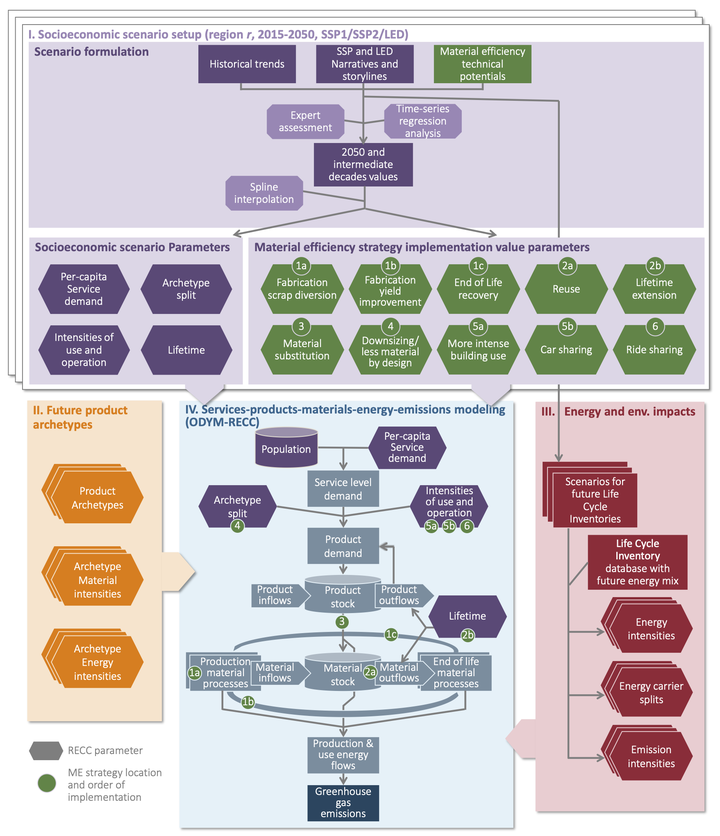A comprehensive set of global scenarios of housing, mobility, and material efficiency for material cycles and energy systems modelling

Abstract
Scenario‐based assessments are a useful tool to explore unknown futures and inform decision makers and the public of the consequences of different courses of action. Scenario developments in industrial ecology have focused on disparate components of the socioeconomic metabolism and case studies, and few efforts of comprehensive and cumulative scenario formulation are documented. Many important, empirically derived relationships between material cycles, end‐use services, and energy use are relevant to global scenario modeling efforts, for example, of integrated assessment models (IAMs), which do not routinely describe material cycles or the life‐cycle impacts of various technology shifts. These inconsistent depictions of material cycles and their environmental impacts hinder the assessment of sustainable development strategies such as demand‐side sufficiency, material efficiency, and energy efficiency. We developed three highly detailed scenarios covering 20 global regions to 2060 for the service provisioning of dwelling area and personal transport grounded in salient building and vehicle operation parameters. Our scenarios are based on, and interface with, the Low Energy Demand (LED) and Shared Socioeconomic Pathways (SSP1 and SSP2) narratives. The results comprise scenario‐, region‐, and period‐specific narratives and corresponding parameter values, including per‐capita floor space and vehicle stocks, building and vehicle archetype mixes, passenger‐km, vehicle‐km, vehicle occupancy rates, and implementation potentials of nine material efficiency strategies. The explicit storyline extension approach presented here is an alternative to the aggregate GDP‐driven or historical trend extrapolations of service or energy demands. We describe the scenario formulation processes, resulting parameters, their applications, and offer an outlook for prospective sustainability models.